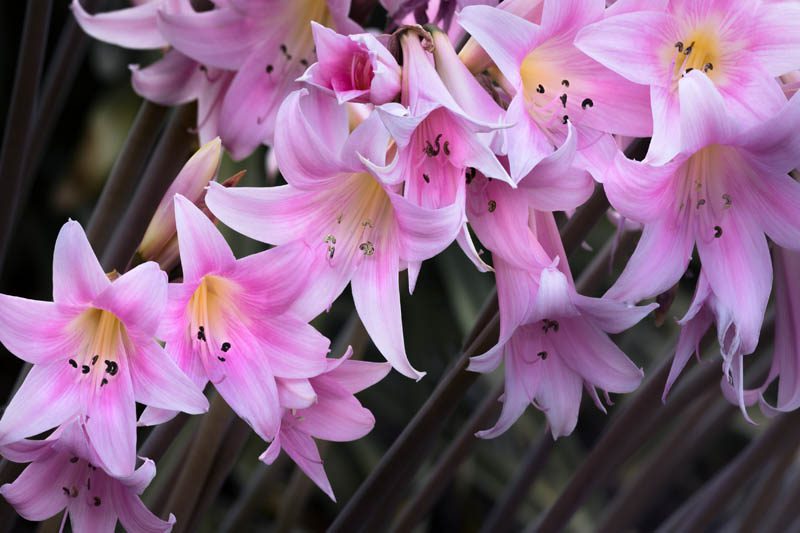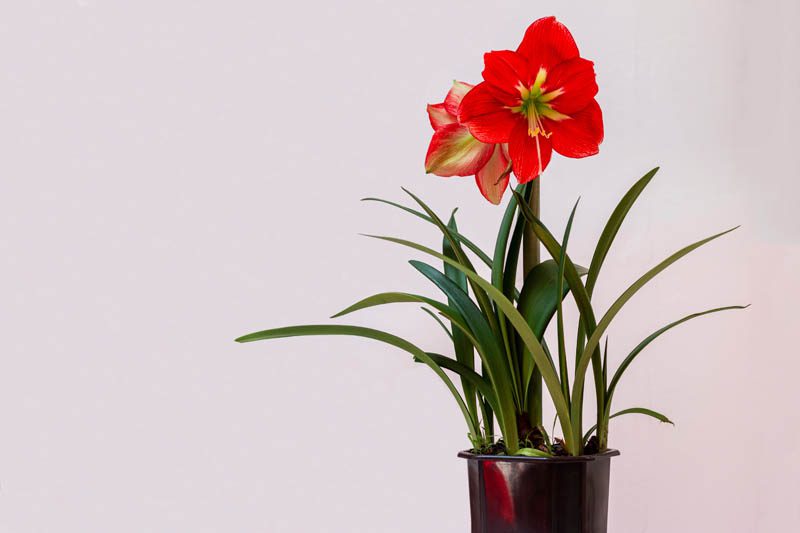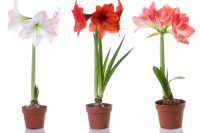About Amaryllis Ι About Hippeastrum Ι Difference between Amaryllis and Hippeastrum
Hippeastrum and Amaryllis are both flowering bulbs grown outdoors in warmer climates. Both plants produce stunning umbelliform flowers and are commonly confused. This article looks at the differences between Amaryllis and Hippeastrum.
Amaryllis

Amaryllis is a flowering bulb native to South Africa made up of two species, A. belladonna and A. paradisicola. Swedish botanist Carl Linnaeus, the father of modern taxonomy, named the species Amaryllis in 1753. He named the South African plant Amaryllis belladonna, based on the Greek word “amarysso,” which means “to sparkle,” in reference to the plant’s beautiful flowers.
Flowers on a single leafless stem in autumn, hence the name ‘naked lady‘. At the top of each stem is a cluster of six or more trumpet-shaped flowers most commonly in pink. A month or so later, the strappy foliage appears, lasting through winter before dying back.
| Family | Amaryllidaceae |
| Botanical name | Amaryllis belladonna, Amaryllis paradisicola |
| Common names | Belladonna lily, Amaryllis, Cape belladonna, Naked lady, Jersey lily, March lily, True amaryllis |
| Plant type | Herbaceous perennial |
| Flower colour | Pink, red and white |
| Native to | South Africa |
| Position | Full sun, partial sun |
Hippeastrum

Hippeastrum is a genus made up of 90 species and 600 hybrids and cultivars of flowering bulbs native to the Caribbean, Mexico and South America. This showy plant is commonly sold as an indoor flowering plant during the Christmas period.
Hippeastrum was previously known as Amaryllis, however, in 1987, the 14th International Botanical Congress ruled that the name Amaryllis belonged to the South African genus while the South American natives were transferred to Hippeastrum. Most commercial Hippeastrum hybrids are derived from just six species.
| Family | Amaryllidaceae |
| Botanical name | Hippeastrum spp. |
| Common names | Hippeastrum, Amaryllis, Mexican lily, St. Joseph’s lily |
| Plant type | Herbaceous perennial |
| Flower colour | Red, salmon, pink, apricot, red and white |
| Native to | Caribbean, Mexico and South America |
| Position | Full sun to part shade |
What is the difference between Amaryllis and Hippeastrum?
Amaryllis |
Hippeastrum |
|
| NATIVE TO | South Africa. | Originates from Central and South America |
| SPECIES | One species (Amaryllis belladonna). | Contains multiple species under the genus Hippeastrum. |
| NAME | Known as Belladonna Lily. | Known as hippeastrum, also commonly called Amaryllis (confusingly). |
| STEMS | Produces one flower long leafless stem when flowering, pink flowers have a purple stem, white flowers have a green stem. Stems are thinner. | Produces multiple flower short stems. Stems are thicker. |
| FLOWERS | Flowers have six equal petals that face upward. | Flowers have six petals, often with a trumpet-like shape that face outward or slightly downward. |
| FLOWER COLOUR | Pink or white. | Red, pink, white, and orange. |
| BLOOMS | Blooms in late summer or early autumn. | Blooms in winter or spring. |
| LEAVES | Narrow and strap-like with a prominent midrib. | Wider and more sword-like with a less prominent midrib. |
| PROPAGATION | Propagates through seeds and offsets. | Propagates through offsets and, occasionally, seeds. |
| DORMANCY | Requires a dry dormancy period before flowering. | Can flower without a specific dormancy period. |
| FRAGRANCE | Sweet, honeysuckle. | No scent. |
| USES | Amaryllis typically grow outside in warmer climates and is not generally grown as an indoor plant. | Hippeastrum is widely sold as indoor flowering bulbs during the Northern Hemisphere Christmas period. Can also grow outdoors in warmer climates. |
| BULBS | Amaryllis bulbs are planted entirely beneath the soil. | The neck of the Hippeastrum bulb remains above ground. |
| SEED SHAPE | Round. | Oblong or three-lobed. |
| NATURAL GROWTH | Grows in clusters in the wild. | Grows individually or in small groups in the wild. |
Julia is a writer and landscape consultant from Wollongong with a love of horticulture. She had been an avid gardener for over 30 years, collects rare variegated plants and is a home orchardist. Julia is passionate about learning and sharing her knowledge of plant propagation and plant toxicology. Whether it’s giving advice on landscape projects or sharing tips on growing, Julia enjoys helping people make their gardens flourish.




